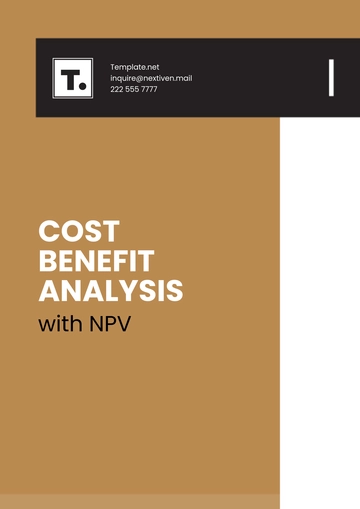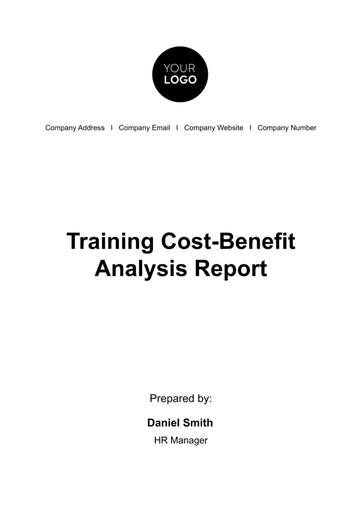Free Car Rental Cost Analysis

A. Introduction
The Car Rental Payment Plan is designed to streamline the financial operations associated with car rental services. This analysis provides a detailed examination of the template’s features, benefits, and potential areas of improvement, focusing on its usability, financial structuring, and flexibility. At [Your Company Name], we recognize the importance of a well-structured payment plan in enhancing customer satisfaction and ensuring efficient financial management.
One of the key features of this template is its usability. It is designed to be user-friendly, allowing customers to easily understand and choose a payment plan that suits their needs. This includes options for daily, weekly, and monthly rentals, as well as customizable plans for long-term rentals. The template also integrates with [Your Company Name]'s existing billing system, reducing the need for manual data entry and minimizing errors. This seamless integration not only saves time but also enhances the accuracy of financial records.
In addition to its usability, the Car Rental Payment Plan offers robust financial structuring. It includes detailed breakdowns of costs, such as base rental fees, taxes, insurance, and additional services like GPS and child seats. This comprehensive approach helps customers understand the total cost of their rental and avoids any hidden fees, fostering a positive rental experience. The template’s flexibility is another significant benefit, allowing [Your Company Name] to adjust rates and terms based on demand and market conditions. However, while the template is highly effective, there are potential areas for improvement, such as enhancing the customization options for diverse customer needs and integrating more advanced analytics to track financial performance. This analysis aims to delve into these aspects, providing insights and recommendations to optimize the Car Rental Payment Plan Template for better efficiency and customer satisfaction.
B. Overview of Car Rental Costs
Understanding the various components that contribute to car rental costs is essential for both customers and car rental companies like [Your Company Name]. Car rental costs can vary significantly based on several factors, including the type of vehicle, duration of rental, location, and additional services. This section provides an overview of these costs, highlighting the key elements that impact the final rental price.
Understanding the various components that contribute to car rental costs is essential for both customers and car rental companies like [Your Company Name]. Car rental costs can vary significantly based on several factors, including the type of vehicle, duration of rental, location, and additional services. This section provides an overview of these costs, highlighting the key elements that impact the final rental price.
1. Base Rental Fee
The base rental fee is the primary cost associated with renting a vehicle. This fee varies depending on the type of car selected (economy, standard, luxury, SUV, etc.), the rental duration (daily, weekly, monthly), and the location. Typically, high-demand locations such as airports or tourist destinations have higher base rental fees.
2. Taxes and Fees
Taxes and fees are additional charges applied to the base rental fee. These include state and local taxes, vehicle licensing fees, and airport surcharges. These costs can add a significant amount to the overall rental price and vary by region.
3. Insurance
Insurance is another critical component of car rental costs. Customers can choose from various insurance options, such as collision damage waiver (CDW), personal accident insurance (PAI), and supplemental liability protection (SLP). These options provide different levels of coverage and security, impacting the total rental cost.
4. Additional Services
Additional services and add-ons also contribute to the overall cost. These services may include:
GPS navigation systems
Child safety seats
Roadside assistance
Additional driver fees
Unlimited mileage options
5. Discounts and Promotions
Discounts and promotions can significantly reduce rental costs. [Your Company Name] often provides discounts for members, corporate clients, and long-term rentals. Seasonal promotions and early booking discounts are also common.
Below is a table summarizing the typical cost components of a car rental:
Cost Component | Description | Estimated Cost Range |
|---|---|---|
Base Rental Fee | Varies by vehicle type and rental duration | $[0] - $[0]+ per day |
Taxes and Fees | State/local taxes, vehicle licensing, surcharges | [0]% - [0]% of base fee |
Insurance | CDW, PAI, SLP options | $[0] - $[0]+ per day |
Additional Services | GPS, child seats, additional drivers, etc. | $[0] - $[0]+ per service per day |
Discounts and Promotions | Membership, corporate, seasonal, early booking | Varies, up to [0]% off |
Understanding these cost components allows customers to make informed decisions and helps [Your Company Name] develop competitive pricing strategies. By transparently presenting these costs, we aim to enhance customer satisfaction and ensure a clear, no-surprise rental experience.
C. Cost Breakdown by Rental Type
To offer a clear understanding of how car rental costs vary based on the type of rental, it's important to examine the specific expenses associated with different rental categories. By analyzing the costs for economy, standard, luxury, and SUV rentals, customers can better anticipate their total expenses and make more informed decisions. The following table provides a detailed breakdown of the typical costs associated with each rental type, highlighting base rental fees, taxes, insurance, and additional services.
Rental Type | Base Rental Fee (per day) | Taxes and Fees (%) | Insurance (per day) | Additional Services (per day) | Estimated Total Cost (per day) |
|---|---|---|---|---|---|
Economy | $[0] | [0]% | $[0] | $[0] | $[0] |
Standard | $[0] | [0]% | $[0] | $[0] | $[0] |
Luxury | $[0] | [0]% | $[0] | $[0] | $[0] |
SUV | $[0] | [0]% | $[0] | $[0] | $[0] |
D. Comparison of Car Rental Costs
Understanding the differences in car rental costs across various companies is crucial for making informed choices. By comparing the costs from different rental companies, customers can identify the best value for their needs. The following table provides a comparative analysis of car rental costs from [Your Company Name] and other leading rental companies. This comparison includes base rental fees, taxes, insurance, and additional services, offering a comprehensive view of the cost landscape.
Rental Company | Base Rental Fee (per day) | Taxes and Fees (%) | Insurance (per day) | Additional Services (per day) | Estimated Total Cost (per day) |
|---|---|---|---|---|---|
[Your Company Name] | $[0] | [0]% | $[0] | $[0] | $[0] |
Company A | $[0] | [0]% | $[0] | $[0] | $[0] |
Company B | $[0] | [0]% | $[0] | $[0] | $[0] |
Company C | $[0] | [0]% | $[0] | $[0] | $[0] |
E. Cost Analysis of Additional Services
Additional services can significantly impact the total cost of a car rental, and it's essential to understand how these extras contribute to overall expenses. Customers often opt for services like GPS, child safety seats, roadside assistance, and additional drivers to enhance their rental experience. The following table breaks down the typical costs associated with these additional services offered by [Your Company Name], providing a clear view of how each service affects the total rental price.
The data highlights the impact of additional services on car rental costs. For instance, opting for a GPS navigation system and a child safety seat adds $15 per day to the rental cost. Including roadside assistance and an additional driver further increases the daily cost by $15, leading to a significant total increment. The highest additional cost comes from unlimited mileage, which adds $15 per day. Understanding these costs helps customers choose the most necessary services and manage their rental budgets effectively. This clarity enhances customer satisfaction by preventing unexpected charges during the rental period.
F. Recommendations for Cost Management
Effective cost management is crucial for both car rental companies and customers. By implementing strategic measures, [Your Company Name] can enhance profitability while providing value to customers. Here are some key recommendations for managing rental costs efficiently:
1. Optimize Pricing Strategies
Dynamic Pricing: Implement dynamic pricing models that adjust rates based on demand, location, and seasonal trends. This approach maximizes revenue during peak periods and attracts customers during off-peak times.
Discount Programs: Offer targeted discounts for early bookings, long-term rentals, and loyal customers. Corporate partnerships can also provide consistent business and allow for negotiated rates that benefit both parties.
2. Enhance Operational Efficiency
Fleet Management: Regularly review and optimize the vehicle fleet to ensure it meets customer demands without incurring unnecessary maintenance and depreciation costs. Investing in fuel-efficient and low-maintenance vehicles can reduce overall operational expenses.
Technology Integration: Utilize advanced software solutions for fleet tracking, maintenance scheduling, and customer management. Automation of these processes can significantly reduce administrative costs and improve service efficiency.
3. Improve Customer Transparency
Clear Pricing Information: Provide detailed and transparent pricing information, including base fees, taxes, insurance options, and additional services. This helps customers make informed decisions and reduces disputes over hidden charges.
Flexible Payment Plans: Offer flexible payment options, such as installment plans or prepaid discounts, to accommodate different customer needs and improve cash flow.
4. Streamline Additional Services
Bundled Packages: Create bundled service packages that offer essential extras (e.g., GPS, roadside assistance, additional drivers) at a discounted rate. This can enhance the perceived value for customers while increasing the uptake of profitable services.
Customer Education: Educate customers on the benefits of additional services and how they can enhance their rental experience. Providing clear information can encourage customers to opt for these services, boosting ancillary revenue.
5. Monitor and Adjust Policies
Regular Reviews: Conduct regular reviews of pricing and service policies to ensure they remain competitive and aligned with market trends. Customer feedback can provide valuable insights for continuous improvement.
Risk Management: Implement robust risk management strategies, such as thorough vehicle inspections and comprehensive insurance coverage, to minimize potential losses from damages and accidents.
By adopting these recommendations, [Your Company Name] can effectively manage costs while maintaining high levels of
G. Conclusion
Effective cost management is vital for the sustainability and profitability of car rental companies. [Your Company Name] can enhance its competitive edge by implementing strategic measures to optimize pricing, improve operational efficiency, and provide transparent pricing information to customers. These steps not only ensure better financial health for the company but also improve customer satisfaction and loyalty.
By adopting dynamic pricing models and offering targeted discount programs, [Your Company Name] can maximize revenue during peak periods while attracting customers during off-peak times. Enhancing operational efficiency through advanced fleet management and technology integration reduces unnecessary expenses, ensuring that the company operates at peak efficiency. Additionally, providing clear and detailed pricing information, flexible payment plans, and bundled service packages helps customers make informed decisions, reducing disputes and increasing the uptake of profitable services.
Regular policy reviews and robust risk management strategies are essential for maintaining competitiveness and minimizing potential losses. By continuously monitoring market trends and customer feedback, [Your Company Name] can make informed adjustments to its pricing and service policies. These proactive measures will ensure that [Your Company Name] remains a leader in the car rental industry, delivering value to both the company and its customers. Through strategic cost management, [Your Company Name] can achieve sustainable growth and long-term success in a highly competitive market.
- 100% Customizable, free editor
- Access 1 Million+ Templates, photo’s & graphics
- Download or share as a template
- Click and replace photos, graphics, text, backgrounds
- Resize, crop, AI write & more
- Access advanced editor
Conduct effective cost analysis with the Car Rental Cost Analysis Template from Template.net. This editable and customizable template is designed to help you analyze and manage expenses for your car rental business. Editable in our Ai Editor Tool, it offers a simple and flexible way to customize the analysis to fit your specific financial goals. Streamline your cost management with this essential template.





























